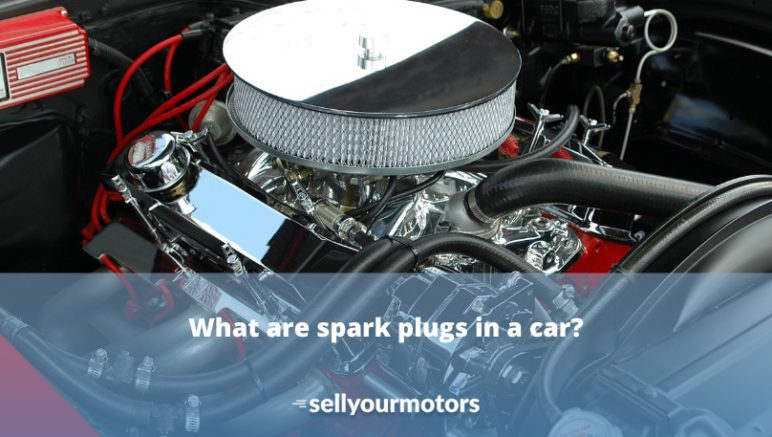Spark plugs are an essential part of your car’s ignition system. They create an electric spark that ignites the fuel mixture in your car’s engine when they are turned on. This is what gives you power when you drive. In a standard car, there are two spark plugs – one at each end of the cylinder. The plugs have a socket where they can be screwed into place, and their insides are generally the same as well. Depending on the type of car and its engine layout, some manufacturers may use different types of spark plugs instead of two basic ones. When shopping for new spark plugs, it’s important to understand what these different types are and how they work.
How do you know when it’s time to replace your spark plugs?
If the spark plugs have been recently changed and the engine is misfiring, it’s probably time to get new spark plugs. If the spark plugs in your engine are more than 5 years old, it’s a good idea to get them changed. Even if you haven’t driven your car for a year, the old spark plugs may not be fully fired and could cause misfiring issues. It’s usually a good idea to change your spark plugs every year, or at least once every five years. When should you change your spark plugs? There are a few situations where you may need to change your spark plugs sooner rather than later. If your engine is high mileage, you may need to change your spark plugs sooner because the old plugs may have carbon deposits in them that could cause misfiring. When you have a very dirty engine, it’s a good idea to change your spark plugs every once in a while. The same goes if your car is old or you drive it every day.
Which spark plug should you change first?
The order in which you change your spark plugs is important. You need to change the spark plug closest to the engine first. This is called the lead or first plug. Once the lead plug is out, you can then change the other spark plug at the other end of the cylinder. This is called the second plug. You need to get the order correct in order to avoid damaging the engine. If you change your spark plugs in the wrong order, you could damage your engine. If your engine is damaged, you could also cause other problems as well. For example, a misfiring engine can cause excessive oil consumption and excessive carbon deposition in the combustion chamber. Changing the lead spark plug first will also let you know how much slack there is in your timing belt. If there’s enough slack, you can change your spark plugs without having to loosen the timing belt first.
Spark plug types
– Wet (common): Wet plugs are the most common type, and they should be changed every 50,000 miles or at every other oil change. Wet plugs have a porcelain insulator. Porcelain is a very hard material that resists cracking and breaks down slowly, while other materials such as rubber can have an excessive amount of carbon and become too hard after a few months.
– Wet/dry: Wet/dry plugs are a combination of wet and porcelain electrodes. They are popular on modern engines that use electronic ignition. These have a porcelain core that retains moisture so it doesn’t crack, along with wet electrodes for resistance.
– Dry/electronic: Dry/electronic are mostly found in newer hybrid and electric car engines. These have a thin layer of conductive material between the electrodes and the cylinder walls.
– Wet/dry/electronic: This type is used in diesel engines and combines a wet/dry spark plug with an electronic one. – Pre-ignition catalyst plugs Pre-ignition catalyst plugs are used in diesel-powered vehicles and are primarily used in pollution control systems. These plugs have a coating on the electrodes that can help to prevent pre-ignition, which is a condition where the compression of the fuel-air mixture is too high and could cause a backfire.
Post-ignition catalyst plugs
Post-ignition catalyst plugs are used in gasoline engines only. They are designed to help prevent the backfire that can occur when the fuel mixture is too rich. If your car’s engine backfires, it can damage the engine and cause many problems. These plugs have a layer of material on the electrodes that can help to reduce the risk of this happening.
Iridium spark plugs
Iridium spark plugs are the most expensive spark plugs on the market. They are made of an alloy of iridium and platinum and are used on high-performance engines only. These spark plugs can withstand extremely high temperatures and are resistant to engine wear.
Hetero Catalytic plugs
Hetero catalytic plugs are used in many newer cars and are similar in design to the post-ignition catalyst used on diesel engines. These have a catalyst on the outside of the plug that can help to reduce the amount of harmful NOx emitted when the engine is running.
Coarse wire electrode (CCWC) Spark Plugs
Coarse wire electrode spark plugs are most commonly used in older gasoline engines. These are designed to produce power at lower engine speeds, but don’t last as long as other spark plugs. Coarse wire spark plugs are especially good for engines with a lot of sludge in the engine.
Fine wire electrode (FCWC) Spark Plugs
Fine wire spark plugs are most commonly used in modern engines because they produce more power and are more durable. This type has a smaller wire, and as a result, it can heat up faster and burn longer. These are also less likely to become fouled than other types of spark plugs.
Summary
The spark plugs of your car needs to be changed periodically. There are a few different types of spark plugs, and it’s important to know the best way to change them so that they last as long as possible. It’s also important to get new spark plugs at the right time since they can cause engine misfiring if they are not fully fired.
Sell Your Motors
Car buying specialists are your best bet when you want to sell your car fast for a fair price. At Sell Your Motors we pride ourselves for being transparent and completing the whole car buying process in only 30 minutes!







